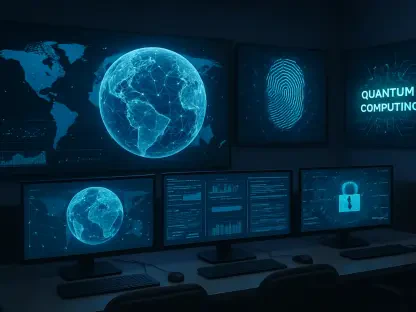NTT DOCOMO and NTT Communications Corporation have successfully tested a groundbreaking cloud-rendering 3D video technology that promises to radically change various industrial applications. The innovation allows users to access high-definition three-dimensional video content in real-time on standard tablets and smartphones. This exciting development is made possible by leveraging edge-computing environments such as docomo MEC® and on-premises edge servers, enabling high-precision 3D visuals to be processed in the cloud and then transmitted seamlessly to mobile devices. This middleware solution for 3D-image processing applications is set to make the use of three-dimensional visuals in industrial settings not only feasible but practical, marking a new era in digital transformation.The implications of this technology are significant, particularly in industrial environments where detailed visual representation can provide enhanced operational efficiency and more effective problem-solving tools. Imagine the utilization of digital twins—virtual replicas of physical objects or systems that can be used for simulations and diagnostics—in industries like manufacturing and logistics. The ability to view and interact with these 3D models in real-time can revolutionize maintenance processes, quality control, and design testing. Similarly, the integration of the metaverse in industrial applications opens doors to new forms of training, virtual collaboration, and remote monitoring, offering a more immersive and interactive experience for users.
Digital Transformation Across Sectors
The forthcoming commercial launch of services based on this cloud-rendering technology in April 2025 signals a significant leap toward digital transformation across multiple sectors. By embedding this advanced technology into their operations, industries can expect to streamline processes and enhance user experiences while gaining a competitive edge. Edge computing plays a crucial role in these advancements, providing the necessary computational power to manage and process data at the network’s edge, thus reducing latency and improving responsiveness. This integration leads to an ecosystem where high-quality, immersive visual experiences become the norm rather than the exception.As industries move toward incorporating advanced tech solutions, the adaptability and scalability offered by edge computing and cloud-rendering technology cannot be overstated. For instance, in the healthcare sector, this technology could facilitate remote surgeries or complex medical diagnostics through detailed 3D models streamed to surgeons and doctors in real-time. In the construction industry, architects and engineers could benefit greatly from real-time 3D visualizations of construction sites, thereby enhancing planning and reducing the likelihood of costly errors. These examples highlight not only the versatility of the technology but also its potential to deliver operational efficiencies across various sectors.
A Future Built on Enhanced Visual Processing
NTT DOCOMO and NTT Communications Corporation have successfully conducted tests on a revolutionary cloud-rendering 3D video technology, which promises to transform numerous industrial applications. This innovation enables users to stream high-definition three-dimensional video content in real-time on ordinary tablets and smartphones. By leveraging edge-computing environments like docomo MEC® and on-premises edge servers, the technology can process high-precision 3D visuals in the cloud and transmit them seamlessly to mobile devices. This middleware solution makes the deployment of 3D images in industrial contexts not only possible but practical, signaling a new era in digital transformation.The potential of this technology is substantial, specifically in industrial sectors where detailed visual representation enhances operational efficiency and problem-solving. Consider the use of digital twins—virtual counterparts of physical objects or systems for simulations and diagnostics—in industries such as manufacturing and logistics. Interacting with these 3D models in real-time could revolutionize maintenance, quality control, and design testing processes. Moreover, integrating the metaverse in industrial roles paves the way for innovative training methods, virtual collaboration, and remote monitoring, offering users a more immersive, interactive experience.









